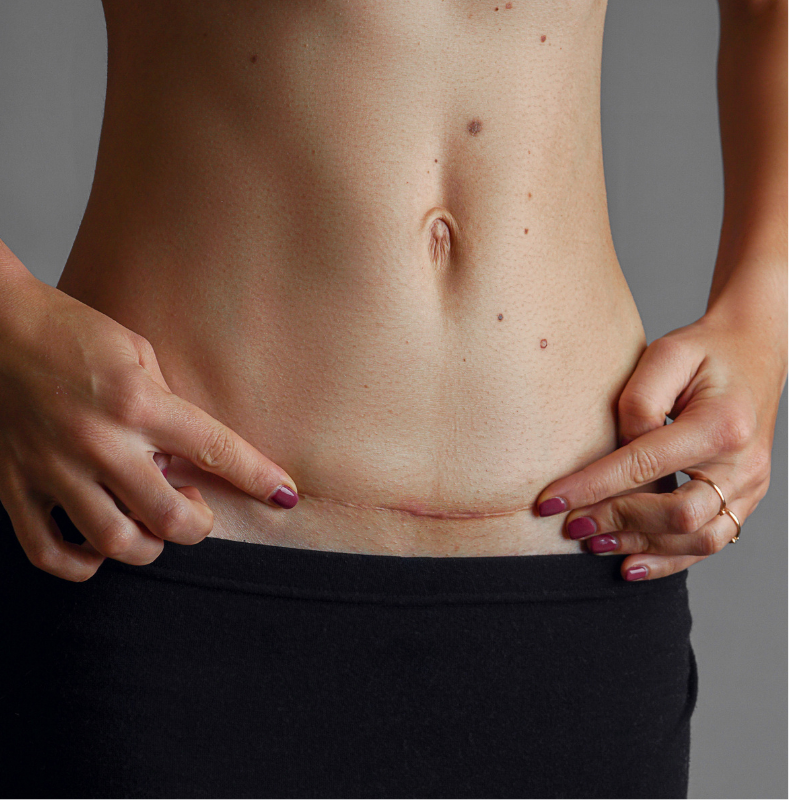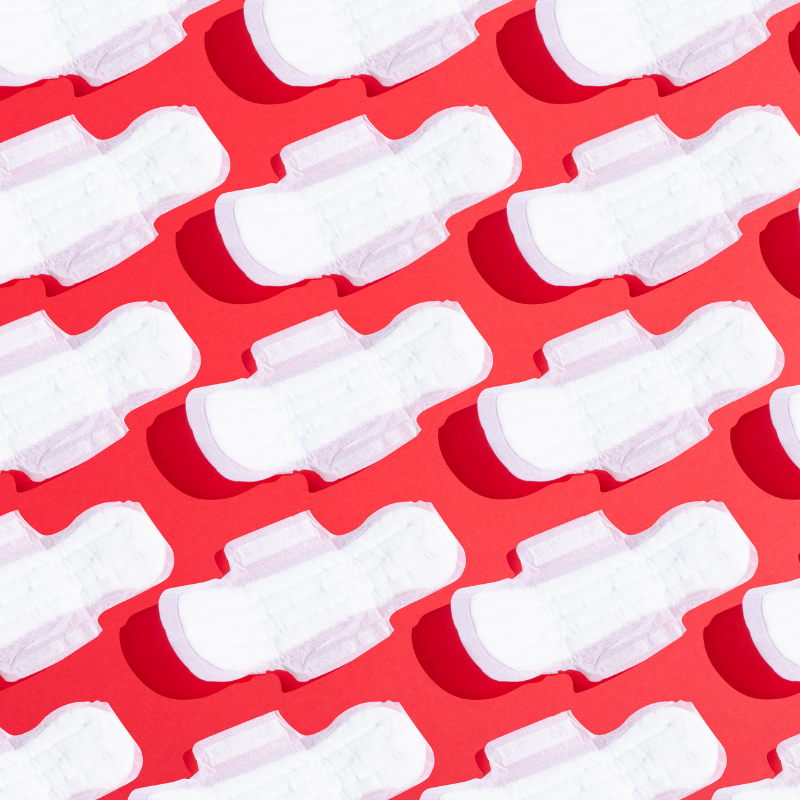Many people are surprised about vaginal bleeding after a c-section. After all, the baby didn’t come out that way…why would you expect extra vaginal discharge?
The bleeding is actually from where the placenta lied within the uterus. The placenta is the organ your body grew to support your pregnancy. After a cesarean birth, the placenta is removed from the uterine wall. In a vaginal birth, the placenta is delivered shortly after the baby is born. The placenta is a temporary organ, and your body creates a new one with each pregnancy.
The bleeding after a cesarean delivery is similar to the bleeding after a vaginal delivery. In both cases, the placenta has detached from the wall of the uterus leaving blood vessels behind that need to heal. Additionally, your body will shed the lining of the uterus, which has grown thick during pregnancy. Your hospital will offer you sanitary pads after birth. You should avoid using tampons or menstrual cups due to the risk of infection.

While I am a labor and delivery nurse, I am not your nurse and am not giving you medical advice. Any questions or concerns you have about your health should be directed to your healthcare provider. Posts on this website may contain affiliate links.
How long do you bleed after a c-section?
Bleeding after a c-section should be done by 6-8 weeks after birth. While vaginal bleeding is normal after birth, it should slow down and change in color and consistency in the weeks following the birth of your baby. This vaginal discharge is called lochia and is expected in the postpartum period.
Lochia
The first few days, you will have lochia rubra which is a dark red or brownish discharge. It’s mostly made up of extra blood and is normal as the uterus heals from birth. Small blood clots, no larger than a golf ball or clementine, are normal. Passing large clots or soaking through a maternity pad could be an indication of postpartum hemorrhage or uterine atony, meaning the uterus has poor tone.
About 4 days after birth, the discharge will lighten in color to become lochia serosa. This discharge is usually a light pink and tends to be more watery.
The following weeks, the discharge will change to be white in color, called lochia alba. There may occasionally be a little blood in the discharge, but it is mostly a thin, white discharge. It mainly consists of white blood cells leaving the body after healing the uterus. This may last for up to 6-8 weeks postpartum.
You may notice that the discharge increases slightly when you are up and active or while you are breastfeeding. This is normal, and as long as there is not heavy bleeding it can be expected.
You may also notice some uterine contractions with breastfeeding or when you are more active. This is nature’s way of helping your uterus clamp down on those blood vessels and slow down the blood flow. These afterbirth cramps may feel like labor contractions and you may feel more sore after a cesarean section. C-sections are major surgery and you can expect to feel sore in the weeks following birth.
Bleeding from the cesarean incision
Bleeding from the incision site after a cesarean birth is not normal. In the first few days after your surgery, you may see some drainage that is blood tinged. You should call your doctor if the incision is opening and actively bleeding.

When is the bleeding a concern?
Normal postpartum bleeding is like a heavy period at best. You may see some small clots, but not heavy vaginal bleeding. It should not be a constant flow of blood or be full of large clots.
Some people are more at risk for abnormal bleeding after birth. If the bleeding becomes too much, it is considered to be a postpartum hemorrhage. You are more at risk for postpartum hemorrhage if you had a large baby, placenta prevue, a c-section delivery, have a medical condition that makes it harder for your body to clot, or if you had a placental abruption. These are just some of the risk factors for a postpartum hemorrhage. Certain medical conditions may also put you at risk for excess blood loss.
Bleeding through more than one sanitary pad per hour and passing clots larger than a golf ball are signs that the bleeding is too heavy. You should call your health care provider if you are concerned there is too much blood. This may be an emergency situation.
If you experience a postpartum hemorrhage, your care team will closely monitor your blood pressure, heart rate, and your other vital signs. You may require a blood transfusion or other medications to slow the bleeding down.
Improving comfort after a cesarean birth
Many people feel very sore in the weeks following their cesarean. You should always talk to your personal healthcare professional to help them guide you through those first weeks postpartum.
Using an abdominal binder can help offer support and comfort after a c-section. Your doctor may even prescribe one to you. You can purchase a high quality support belt for just $25.

I also hear many cesarean patients say that they prefer underwear that is soft and high waisted so the fabric does not irritate the incision. Many people like wearing high waisted compression leggings for support or loose dresses for comfort postpartum.
You may wish to wear some extra-absorbent maternity pads after birth. These are thicker than the standard sanitary pad and will help keep you comfortable. Ask the hospital you delivered at for some extra to take home! Some patients prefer to wear an adult diaper in the first weeks after their cesarean birth.
Most people need some sort of pain medication. Your doctor may prescribe some, or you can use over the counter pain relievers like ibuprofen or acetaminophen.
Avoid any strenuous activities in the first few weeks. Gradually increase your activity level so that you are not experiencing a ton of pain and can let your body heal. Additionally, you should avoid having intercourse until your doctor gives you the green light that everything is healed.
You may also want to use stool softeners after birth. Straining with bowel movements can be very painful after a cesarean since they cut through the abdominal wall to get your baby out!
Cesarean recovery can be tough for many folks. Be sure to always contact your healthcare provider with any questions or concerns you have about your health.
Looking for more information on giving birth, labor, and postpartum? Click here to check out our online course.

